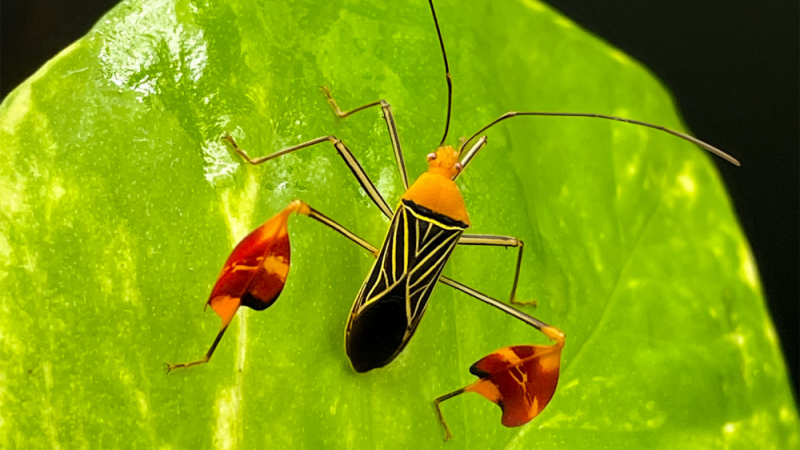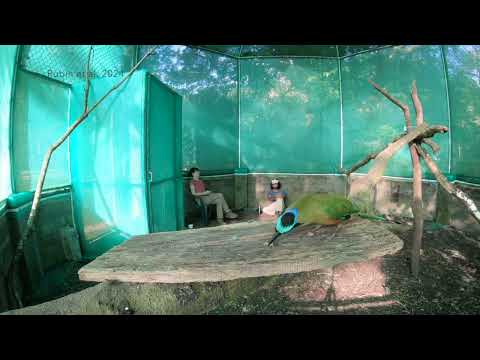These insects give off major red flags

Nature comes in wild colors, like the electric blue tarantulas and brightly spotted poison dart frogs. Named after bull fighters, matador bugs (Anisoscelis alipes) are known for vibrant flag-like red decorations on their hind legs. These insects are native to Colombia, Costa Rica, Ecuador, Panama, Venezuela, and Mexico, and scientists have been stumped as to what their signature red flags on their legs are used for. A study recently published in the journal Behaviors Ecology found that this fancy leg waving is actually part of the matador bug’s elaborate defense strategy.
In animals, some of the most obvious and showy traits are usually expressed by males, like an elk’s large antlers or a peacock’s loud plumage. A 2022 study suggested that matador bugs’ leg movements were not a sexual display. Both male and female matador bugs like to flaunt their removable hind legs and the waving behavior did not change if there were potential mates around or not. It led researchers to question if their leg waving warns predators about a potential chemical defense and bad flavor or divert attacks towards their removable hindlegs to increase their chances of getting out alive.
[Related: Cicadas pee in jet streams like bigger animals.]
To try to answer what is going on with their legs, the team on the new study worked in Gamboa, Panama, a small town near the Panama Canal. They attached red flags that mimicked the matador bug’s accessories to the legs of crickets, and observed how predatory birds called motmots responded to the red flags. Motmots are large birds with iridescent feathers, long tails, keen eyesight, and a strong taste for crickets. The team spent about a month just catching the birds for the experiment.
“We placed the nets in areas of the forest where we saw that the birds moved the most and, when an individual was captured, it was immediately taken to the cages and tested,” study co-author and a research associate at the Smithsonian Tropical Research Institute (STRI) Jorge Medina said in a statement. “When the birds were finished with the tests, we released them back in the same area where they were captured.”

They found that the strikes from the birds were not primarily aimed at the hind leg flags. This indicated that the flags were not used as a way to deflect predator attacks. However, it supported the idea that some sort of chemical defense was potentially being used by the bugs as self-defense.
The regular crickets were always attacked, but the ones with flags got fewer hits. Matador bugs themselves were actively avoided by the bird, whether they had flags or not. According to the team, this indicates that the flags are just one component of their defense strategy.
[Related: Bug-munching plant turns insect nurseries into death traps.]
To further test the idea that the birds didn’t like the taste of matador bugs, they offered both crickets and matador bugs to baby birds that had never seen them before. With or without their flags, the matador bugs seemed to warn the predators to stay away. When the chicks attacked, they demonstrated that the bugs were distasteful by shaking their heads and often refusing to eat more matador bugs. However, the crickets were readily attacked and eaten.

“I was fascinated to see that when we outfitted tasty crickets with the matador bug flags they immediately became less appealing to their bird predators,” study co-author and STRI post-doctoral fellow Juliette Rubin said in a statement. “It seems like this warning signal is enough to make the birds cautious, but bugs themselves are so well equipped with ‘don’t eat me!’ signals that even without the flags, experienced birds wouldn’t touch them.”
The team believes that the flags appear to signal to birds that matador bugs are not a tasty or safe choice of a snack. These flags also collaborate with other parts of the bug’s characteristics to emphasize that message. This indicates that they are part of a complex defense strategy that likely evolved to protect them from birds.










